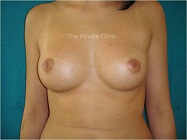Your first discussion with a practitioner should clearly set out your expectations of the treatment. This should be matched by what the doctor says the treatment will achieve for you.
A medical history should be taken to make sure that there are no reasons why you shouldn’t undergo liposuction and fat transfer. You would also normally be asked to read information and sign a consent form at this time which means that you have understood the potential benefits and risks associated with this type of procedure.
Photographs may also be taken by the practitioner for a "before and after" comparison at a later date.
Your surgeon or doctor will give you specific instructions before coming in for the procedure. This may include avoiding the use of aspirin or any other non-steroidal anti-inflammatory (NSAIDS) drugs for a couple of weeks before treatment as these can cause increased bleeding. They may advise you to stop smoking as this can delay wound healing, and avoid alcohol for a few days before the procedure.
Anaesthesia
Your anaesthetic may be local, in the area of the treatment only, or general depending upon the area treated, the technique used, and your surgeon’s or doctor’s recommendations.
The use of a general anaesthetic carries a small additional risk which your practitioner will discuss with you before making any final decisions. Depending upon the type of anaesthetic used, you may also have to follow fasting instructions the night before and morning of your surgery.
Procedure
Small areas of fat collection may be performed in an outpatient clinic room, (providing it has the right facilities) but large areas would normally be done in a hospital.
The fat is usually collected from the abdomen, buttocks, or thighs. Small cuts, around 5mm or so in length, are made around the area to be treated, and a hollow suction tube (cannula) is put in and moved around to break up the unwanted fat. The fat is removed, either by being sucked out manually with a large syringe, or with the use of a vacuum pump. The surface layer of skin remains attached to the tissue and underlying muscles, and a thin blanket of fat is left to help prevent rippling or lumpy or irregular looking skin following fat removal.
The basic technique of liposuction, as described above, is used in all patients undergoing this procedure. However, as the procedure has been improved and developed, several variations have been introduced. One of these is explained below.
Tumescent Liposuction
This is the most common procedure and involves large volumes of fluid - sometimes as much as three times the amount of fat to be removed – injected into the fatty area. This procedure is usually performed on patients who only need a local anaesthetic.
For details on technique variation for harvesting fat, please go to the treatment procedure section in our liposuction section.
After the fat is removed, the cuts are stitched.
The collected fat is then sometimes washed and prepared before reinjection into the new area, which is first anaesthetised.
For small areas of fat transfer to the face, tiny needles are used to distribute the fat carefully and evenly in the layer of the skin just under the surface.
The whole procedure may only take an hour or so if small amounts of fat are collected and transferred.
Repeat procedure
Repeat procedures are often required as transplanted fat is partially reabsorbed by the body. Your surgeon or doctor may take a little bit too much fat initially, so that if some is reabsorbed, it will not spoil the overall look of your treatment. Even so, many patients require additional treatments to get a good long lasting effect (which may last for many years).
Some practitioners take out more fat than is required for the first procedure and freeze the excess fat so that it can be used to top up or maintain an effect for an individual patient at a later date.







